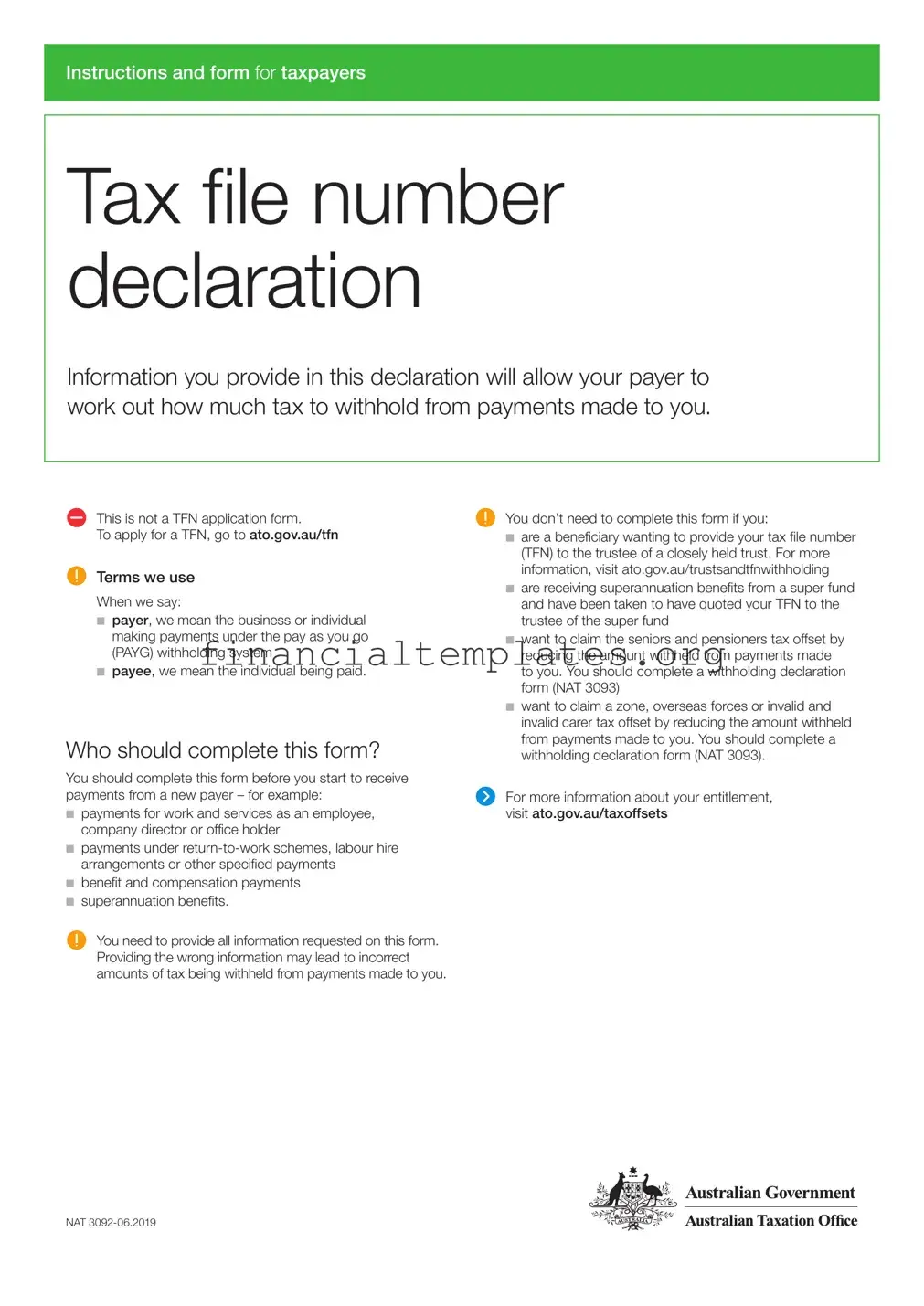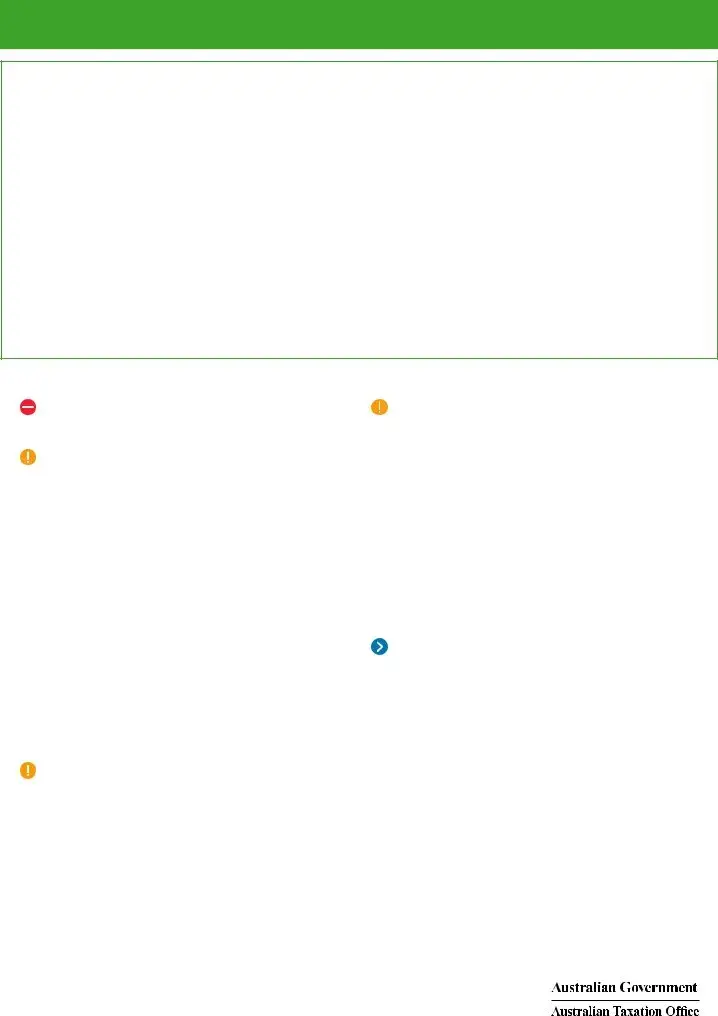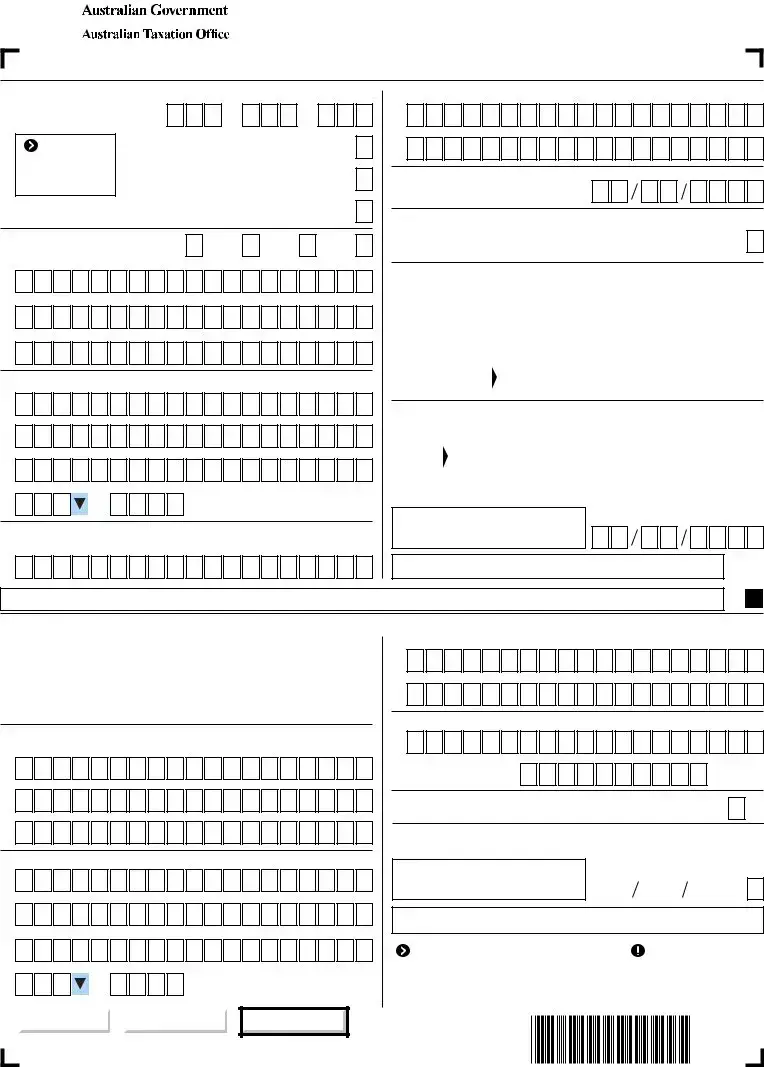Question 9
Do you want to claim the tax‑free threshold from this payer?
The tax-free threshold is the amount of income you can earn each financial year that is not taxed. By claiming the threshold, you reduce the amount of tax that is withheld from your pay during the year.
Answer yes if you want to claim the tax‑free threshold, you are an Australian resident for tax purposes, and one of the following applies:
■■you are not currently claiming the tax‑free threshold from another payer
■■you are currently claiming the tax‑free threshold from another payer and your total income from all sources will be less than the tax‑free threshold.
Answer yes if you are a foreign resident in receipt of an Australian Government pension or allowance.
Answer no if none of the above applies or you are a working holiday maker.
If you receive any taxable government payments or allowances, such as Newstart, Youth Allowance or Austudy payment, you are likely to be already claiming the tax‑free threshold from that payment.
For more information about the current tax‑free threshold, which payer you should claim it from, or how to vary your withholding rate, visit ato.gov.au/taxfreethreshold
Question 10
Do you have a Higher Education Loan Program (HELP), VET Student Loan (VSL), Financial Supplement (FS), Student Start‑up Loan (SSL) or Trade Support Loan (TSL) debt?
Answer yes if you have a HELP, VSL, FS, SSL or TSL debt.
Answer no if you do not have a HELP, VSL, FS, SSL or TSL debt, or you have repaid your debt in full.
You have a HELP debt if either:
■■the Australian Government lent you money under HECS‑HELP, FEE‑HELP, OS‑HELP, VET FEE‑HELP, VET Student loans prior to 1 July 2019 or SA‑HELP.
■■you have a debt from the previous Higher Education Contribution Scheme (HECS).
You have a SSL debt if you have an ABSTUDY SSL debt.
You have a separate VSL debt that is not part of your HELP debt if you incurred it from 1 July 2019.
For information about repaying your HELP, VSL, FS, SSL or TSL debt, visit ato.gov.au/getloaninfo
Have you repaid your HELP, VSL, FS, SSL or TSL debt?
When you have repaid your HELP, VSL, FS, SSL or TSL debt, you need to complete a Withholding declaration (NAT 3093) notifying your payer of the change in your circumstances.
Sign and date the declaration
Make sure you have answered all the questions in section A, then sign and date the declaration. Give your completed declaration to your payer to complete section B.
Section B: To be completed by the payer
Important information for payers – see the reverse side of the form.
Lodge online
Payers can lodge TFN declaration reports online if you have software that complies with our specifications.
For more information about lodging the TFN declaration report online, visit ato.gov.au/lodgetfndeclaration






 There are penalties for deliberately making a false or misleading statement.
There are penalties for deliberately making a false or misleading statement. Once section A is completed and signed, give it to your payer to complete section B.
Once section A is completed and signed, give it to your payer to complete section B. There are penalties for deliberately making a false or misleading statement.
There are penalties for deliberately making a false or misleading statement.